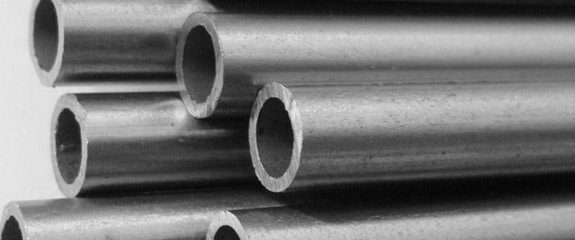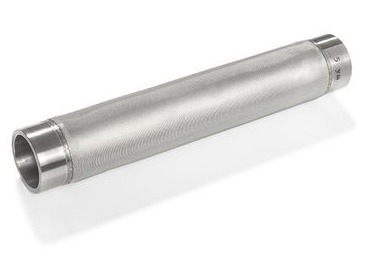Hastelloy C22 vs C276: Picking the Best Heat-resistant Alloy
Finding a wire mesh solution that is resistant to both corrosion and extreme temperatures can make or break the performance of a product. For this reason, manufacturers must turn to specialty alloys, such as Hastelloy.
But just like other wire mesh alloys, Hastelloy comes in a variety of compositions. Because of this, many wire mesh users can sometimes get lost when deciding whether to use Hastelloy c22 or Hastelloy c276.
W.S. Tyler has been weaving industry-leading wire mesh for over 150 years and is here to help you develop a wire mesh solution that will help build your confidence in the products you deliver.
With that, we wrote the following article to help you better understand how Hastelloy c22 and c276 compare. It will cover:
- How Hastelloy c22 is defined
- The benefits of using Hastelloy c22 wire mesh
- How Hastelloy c276 is defined
- The benefits of using Hastelloy c276 wire mesh
- How Hastelloy c22 and Hastelloy c276 compare

What Is Hastelloy C22?
Hastelloy c22 is an austenitic alloy known for its ability to perform under severe conditions in which enhanced resistance to high temperature and corrosion is needed. It is often used when other heat-resistant alloys, such as duplex, can’t meet the mechanical requirements of the application.
On a molecular level, it consists of nickel, molybdenum, tungsten, and chromium.
What Is Hastelloy C22 Used For?
As stated above, Hastelloy is classified as a heat-resistant alloy. This allows you to leverage the accurate screening/filtration capabilities of woven wire mesh in temperatures reaching 1250°F (676°C).
Additionally, the chemical makeup of Hastelloy works to prevent oxidation at these extreme temperatures. In turn, you will find that the surface of Hastelloy woven wire mesh will seldomly encounter discoloration.
Now, in regards to corrosion resistance, Hastelloy is used when pitting corrosion is a concern. This is particularly beneficial when woven wire mesh is introduced to industrial-grade acids and alkalines.
What Is Hastelloy C276?
Hastelloy c276 is a specialized woven wire mesh alloy that is designed to deliver versatile corrosion resistance that is superior to most comparable alloys. It is widely known for its formability, having the ability to be both hot and cold formed with relative ease.
Chemically, Hastelloy is made up of manganese, carbon, nickel, iron, silicon, chromium, and molybdenum.
What Is Hastelloy C276 Used For?
Hastelloy is a popular wire mesh alloy when working in chemical forward applications that reach temperatures of 1900°F (1037°C). In fact, it combats grain boundary precipitation, even after being welded.
This making it ideal for chemical processing specifically.
Hastelloy c276 features the rare characteristic of resisting hypochlorite solutions, chlorine dioxide solutions, and chloride gas. It also has the ability to perform when subjected to ferric and cupric chlorides.
What Is the Difference Between Hastelloy C22 and C276?
When comparing Hastelloy c22 to Hastelloy c276, it is important to first note that c22 offers more desirable corrosion resistance, specifically pitting and crevice. This is mainly because Hastelloy c22 contains greater levels of chromium than Hastelloy c276.
As a result, Hastelloy c22 is the more desirable option if oxidation is a concern. Having said that, both alloys have similar characteristics in terms of the reduction of metal oxide.
But what about fabricating Hastelloy wire mesh to fit your process?
Well, a key benefit Hastelloy c22 has over Hastelloy c276 is that it has better weldability qualities. As stated above, this includes an increased resistance to intergranular corrosion caused by the aftereffects of extreme welding heat.
As great as the qualities these alloys provide, your budget will be the biggest deciding factor of which one you can use. Hastelloy c22 requires less material to produce, making it the cheaper of the two Hastelloy variants.
This all goes to say that Hastelloy c22 is an enhanced version of Hastelloy c276.
The Best Wire Mesh Products Have Well Thought Out Weave Types
When compared to more standardized wire mesh alloys, Hastelloy c22 and Hastelloy c276 offer similar corrosion and heat resistance qualities. But when compared side by side, you will discover Hastelloy offers characteristics that can handle most specialized applications, with Hastelloy c22 being used when the most resistance possible is needed.
Now, once you discover a wire mesh alloy that can withstand the atmosphere of the application, you must work on fine-tuning the weave type you will use. This is a critical step as the weave type of your wire mesh will help control the throughput/flow rate of particles, liquids, and gases.
With 150 years of woven wire mesh experience, W.S. Tyler takes pride in sharing our experiences to help customers remove the roadblocks that prevent their ability to fabricate wire mesh solutions that deliver world-class performance.
To learn about the two primary weave types, you will encounter when navigating through the world of woven wire mesh, read the following article:
About Ronnie Brown
Ronnie is the Content Writer for W.S. Tyler and has four years of experience as a professional writer. He strives to expand his knowledge on all things particle analysis and woven wire mesh to leverage his exceptional writing and graphic design skills, creating a one-of-a-kind experience for customers.



